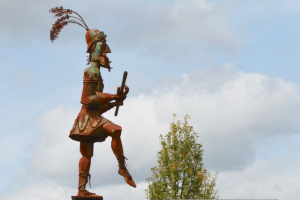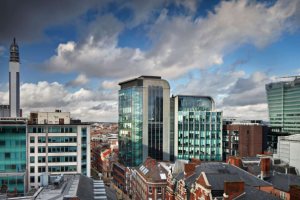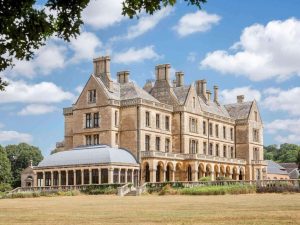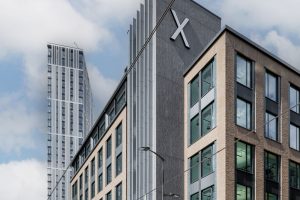University College plans to become Jewellery Quarter’s latest gem
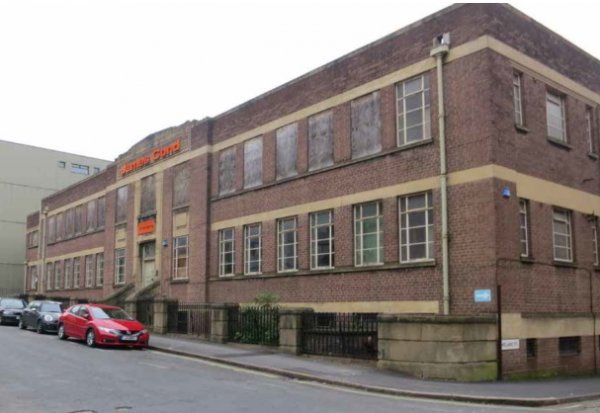
A FORMER Birmingham printers is set to be redeveloped as part of the expansion of one of the city’s new universities.
University College Birmingham is seeking planning permission to redevelop land at Charlotte Street, Holland Street and George Street in the Jewellery Quarter.
The new development will enable the university to more than double the number of students it can teach, from 2,000 to 4,500. It will also allow for staff numbers to increase from 55 to 190.
The scheme proposes the demolition of the former Lodge Cotrell building at 21 George Street and the partial demolition of the former James Cond building at 9 Charlotte Street and 12 George Street.
They would be replaced by new university buildings with retail, restaurant, offices, health facility and sports hall uses plus a multi-storey car park with access from George Street.
Somewhat controversially, the scheme also proposes to close off Holland Street to traffic and have a covered walkway installed over a pedestrianised area. There will be a new pedestrian/cycleway between George Street and Holland Street, which will run along the line of the former Whitmore’s Arm.
There will also be external alterations to the facade of McIntyre House, on Holland Street, and Camden House.
The proposal is to provide the second phase of the university’s new city campus, which will cover 22,912sqm of new floor space within two new educational buildings, together with a 234-space car park.
The façade of the James Cond fronting Charlotte Street will be preserved but the Lodge Cottrell building will be completely demolished.
The James Cond building was originally constructed in 1936-37 as a purpose-built printers and is currently vacant apart from the ground floor which is used by UCB for car parking.
An existing two-metre high wall enclosing the entrance to the Whitmore Arm would be demolished, as would part of the facade to McIntyre House where it adjoins the Lodge Cottrell building fronting on to Holland Street.
The first of the new buildings will be located on the southern side of Holland Street and will incorporate the retained facades of the James Cond building onto Charlotte Street and George Street. The new building will be four storeys high and accommodate lecture theatres, classrooms, staff offices, IT suite and 132 cycle spaces.
At ground floor level fronting Holland Street there will be a row of commercial which are expected to provide real life skills training for beauty, hairdressing, bakery and sport therapy.
There would also be a fine dining restaurant with 60 covers fronting George Street and serviced by students as part of their course work. The main entrance to the building would be from Holland Street.
To the rear of the building and Camden House to the west, a landscaped courtyard is proposed including external seating, lighting and planting.
Building B would be located on the east side of Holland Street and on the south side of George Street and would also be four storeys high. It would accommodate a kitchen and diner, lecture theatres, student guild, student advice centre, classrooms, and staff rooms. Part of the first floor would also accommodate a gym and changing rooms with part of the second and third floors above used as a sports hall.
Between Building B and McIntyre House, the existing landscaped courtyard will be retained.
Buildings A and B and McIntyre House would be linked at roof level through the
provision of a glazed canopy across Holland Street.
Building C will be located fronting George Street, between Building B and the
route of Whitmore Arm. The building would predominantly be used as the multi-storey
car park although a ground level there would be office space and a student/community health facility, together with a police office.
The report to Thursday’s (May 12) planning committee states: “The proposals provide further education facilities in the Jewellery Quarter including active ground floor uses are welcomed and would help revitalise this part of the Conservation Area. The amount of demolition proposed, height and scale of the new buildings, closure of Holland Street and provision of the canopy are considered to cause some harm to both the conservation area as well as the setting of listed buildings nearby.
“It is considered than on balance the harm caused (to the Conservation Area) would be off- set by the public benefits that would be provided by the development.”



